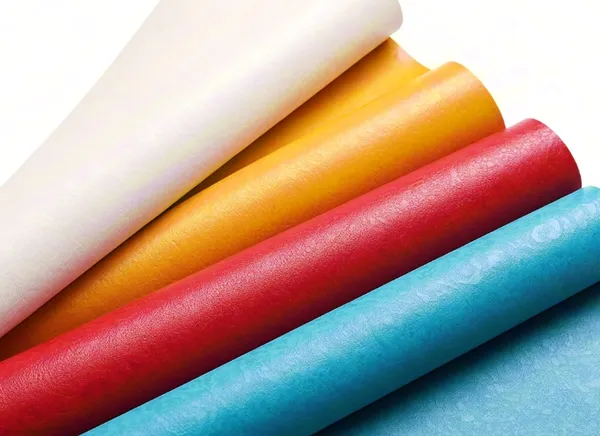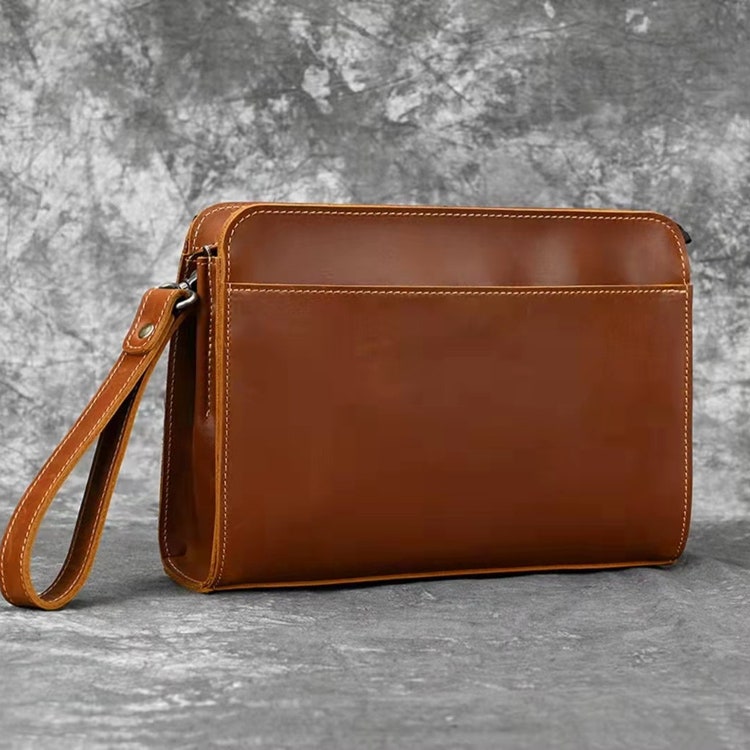PVC leather is a good material for making bags and it is a synthetic material. PVC leather has good durability, excellent water resistance and stain resistance, and can use for making a wide variety of bags. This article will explore the material characteristics of PVC leather and its advantages for making bags.
What is PVC leather mean?
PVC leather is a synthetic artificial leather, based on plastic and mainly composed of polyvinyl chloride. It imitates the appearance and texture of genuine leather and is an alternative to genuine leather.
PVC leather is a type of leather that is inexpensive, usually 50% to 80% cheaper than genuine leather, while also having good durability. It is suitable for low-cost leather products, such as fashionable bags and bags for short-term use.

Is PVC leather real leather?
No. PVC leather is not real leather.
PVC leather is a synthetic leather made of polyvinyl chloride resin and is a kind of artificial synthetic material. Polyvinyl chloride leather has an appearance and texture similar to plastic. It is often used as a substitute for genuine leather in various products, such as bags and shoes.
Genuine leather is made from the tanned skin of animals such as cattle and sheep, and it has a natural texture, breathability and aging properties.
Why isn’t PVC leather genuine leather?
Free of animal components: Genuine leather comes from animal skins, and polyvinyl chloride is pure plastic.
Artificial texture: The “leather texture of PVC” is printed on, not natural.
Performance: Lacks the breathability and aging resistance of genuine leather.
PVC Leather vs. Real Leather
| Aspect | PVC Leather | Real Leather |
| Material | Plastic (Polyvinyl Chloride) | Tanned animal hide (cow, sheep, etc.) |
| Source | Petroleum-based, man-made | Natural, from animals |
| Breathability | None (traps heat/sweat) | High (naturally breathable) |
| Durability | 1–5 years (peels/cracks) | 10+ years (ages beautifully) |
| Feel | Stiff, plasticky | Soft, develops unique patina |
| Eco-Impact | Toxic production; microplastics | Biodegradable (if untreated) |
Is PVC leather waterproof?
Yes, PVC leather (polyvinyl chloride leather) has excellent waterproof performance. Its surface has undergone special treatment, which can effectively prevent water penetration. The plastic (polyvinyl chloride) structure of PVC leather creates an impermeable liquid barrier. The waterproof performance of PVC leather not only makes it easy to clean but also helps maintain the performance and appearance of the product in damp environments.
Why can PVC leather be waterproof?
PVC coating: The outer layer of PVC leather is made of plastic, which is impermeable by itself.
Synthetic substrate: Unlike porous natural leather, polyvinyl chloride leather usually has a synthetic fabric substrate (such as polyester) that is not easily absorbent of water.
Sealed surface: The manufacturing process creates a sealed, pore-free surface to prevent water penetration.
Is PVC leather toxic?
Yes, PVC leather may be toxic because some toxic chemical components are used in the manufacturing process of PVC leather. Therefore, when PVC leather is exposed to high temperatures, degrades or burns, it releases toxic chemicals.
What toxic chemical components are there in PVC leather?
Phthalates
To soften PVC leather and make it elastic, manufacturers add plasticizers, usually phthalates. These chemicals are toxic and may cause reproductive problems, cancer, etc., especially posing a greater potential threat to children and pregnant women.
Chlorine and dioxin
The production of polyvinyl chloride releases dioxin (a carcinogen), which is highly toxic! It will also release chlorine, which will pollute the air and water.
Heavy metal
Some PVC leathers contain lead or cadmium (in dyes/stabilizers), which are neurotoxic.
Release of toxic gas
New PVC products may release volatile organic compounds (VOCs), causing headaches, breathing difficulties or nausea.
The hazards of combustion
If PVC leather is burned (for example, in a fire), it will release hydrogen chloride gas. When inhaled, it will form hydrochloric acid and dioxin, both of which are harmful to health.
Are products made of PVC leather safe?
Short-term: General products are safe, such as handbags and shoes, but try to avoid contact with the skin. In addition, cheap PVC leather may release chemicals under hot conditions.
Long-term: There is a risk to items such as car seats (heating increases exhaust emissions) or baby products (choose phthalate-free certified).

Is PVC leather good for bags?
Yes, PVC leather can be a very good material for making bags, and many bag factories often use it, but it has obvious limitations. Whether to consider using PVC leather to make bags depends on the positioning of your bag brand and other specific needs.
The advantages of making bags with PVC leather
Economical and practical
PVC leather is usually 50-80% cheaper than genuine leather and is also more affordable than high-end synthetic alternative PU leather. This makes it a popular choice for cheap bags.
Ideal use: Fashionable and for short-term use (such as seasonal fashion bags).
Waterproof and easy to clean
PVC leather is water-resistant and stain-resistant, making it suitable for daily use. It can withstand light rain and leakage without being damaged. The smooth surface of PVC leather can be easily wiped clean with a damp cloth and requires minimal maintenance.
Most suitable for: rainproof tote bags, washable work bags, or for use on the beach/by the swimming pool.
Vegetarian
It is a moral choice and contains no animal products (unlike genuine leather).
Customizable colors and textures
PVC leather can be made in various colors, textures and finishes, allowing for creative and fashionable designs. This flexibility makes it very attractive to avant-garde fashion or declaration bags.
Lightweight
Bags made of PVC leather are usually lighter than those made of genuine leather, which can increase comfort during long-term use.
The main disadvantages of PVC leather
Poor durability
With long-term use, PVC leather may develop cracks or peel off, especially in areas that are frequently bent or folded. The usual service life is 1 to 3 years.
The main drawback is that the handle and the corners wear out quickly.
Toxicity issue
By-products containing: phthalates (in cheap PVC) and chlorine.
A safer option: Look for PVC that is phthalate-free or OEKO-TEX® certified.
Comfort and Aesthetics
PVC leather can imitate the appearance of genuine leather, but it often lacks the softness, flexibility and natural texture of high-quality leather. It feels a bit hard and lacks the softness of leather.
It has an artificial luster in appearance and will not produce copper rust. If you are pursuing a high-end or luxurious feeling, this kind of PVC leather is not very suitable.
Impermeable
PVC leather is not as breathable as natural materials. If worn close to the skin for a long time (for example, as a backpack or a single-shoulder bag), it can cause discomfort.
Environmental issues
Polyvinyl chloride is a type of plastic, and its production and processing can have a negative impact on the environment. For sustainability considerations, some consumers prefer environmentally friendly materials.
Sensitivity to heat
PVC leather will soften or warp when exposed to high temperatures. If you live in a hot climate or plan to place your bags in direct sunlight, this might be a problem to consider.
Where to customize PVC leather bags?
If you are looking for custom PVC leather bags, you can look for online custom bags manufacturers, which are relatively more suitable for small-batch orders. You can also choose a local bag factory that can provide custom PVC leather bags.
If you just want one or a few PVC leather bags, making them by yourself is also a very good method.
If you want to create your own bag brand, we suggest you contact us and let our factory design and manufacture PVC leather bags or bags made of other materials for you.
